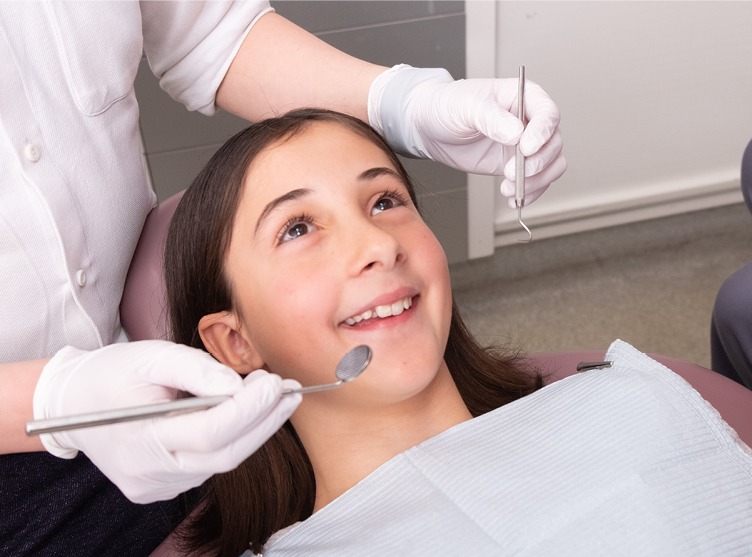Not known Details About Legacy Orthodontics
Table of ContentsExcitement About Legacy Orthodontics9 Easy Facts About Legacy Orthodontics ExplainedEverything about Legacy OrthodonticsExcitement About Legacy Orthodontics9 Simple Techniques For Legacy Orthodontics
In enhancement, we use flexible treatment routines, versatile repayment choices and a fun, satisfying experience.An orthodontist is a dental professional educated to detect, protect against, and deal with teeth and jaw irregularities. They fix existing problems and are trained to determine issues that may establish in the future. Orthodontists work with individuals of all ages, from children to grownups. Individuals frequently associate a perfect smile with excellent health.
Malocclusion, or misaligned teeth, can bring about oral problems, including dental cavity, gum tissue illness, and difficult or agonizing chewing. Not everyone is birthed with straight teeth. If you have a negative bite or huge rooms between your teeth, you may want to seek advice from a dental practitioner focusing on orthodontic treatment.
The Of Legacy Orthodontics
( Photo Debt: DigitalVision/Getty Images) Orthodontists use taken care of and removable dental tools, like dental braces, retainers, and bands, to transform the position of teeth in your mouth. Orthodontic therapy is for oral problems, consisting of: Uneven teethBite issues, like an overbite or an underbiteCrowded teeth or teeth that are too much apartJaw misalignmentThe objective of orthodontic treatment is to enhance your bite.
A healthy and balanced bite ensures you can consume, eat, and speak appropriately. While you might consider orthodontists as mostly for kids or young adults that require braces, they can deal with oral problems at any type of age. Orthodontists participate in college, dental college, and orthodontic school. After graduation, they spend 2 or 3 years in an orthodontic residency program.
All orthodontists are dental practitioners, but not all dentists are orthodontists. Orthodontic residency programs use extensive, concentrated instruction for dental experts. They concentrate on 2 areas: Just how to correctly and safely move teeth How to correctly lead growth in the teeth, jaw, and faceOnce an orthodontist has actually completed training, they have the option to become board accredited.
An Unbiased View of Legacy Orthodontics
Imbalance, or malocclusion, is the most typical reason individuals see an orthodontist. It is hereditary and is the outcome of size distinctions between the upper and reduced jaw or between the jaw and teeth. Malocclusion leads to tooth congestion, a twisted jaw, or irregular bite patterns. Malocclusion is usually treated with: Your orthodontist affixes metal, ceramic, or plastic square bonds to your teeth.
Some people need a headgear to assist move teeth into line with pressure from outside the mouth. A retainer is a custom-made gadget that maintains your teeth in area.
They're most usually utilized on youngsters. They can develop added space in the mouth without having to draw teeth. If you have a severe underbite or overbite, you may require orthognathic surgery (additionally called orthodontic surgical procedure) to extend or reduce your jaw. Orthodontists utilize cables, medical screws, or plates to sustain your jaw bone.
You might require to see an orthodontist if you have: Crowding or otherwise enough room for all of your teethOverbite, when your top teeth come your base teethUnderbite, when your bottom teeth are too much forwardSpacing or issues with gapsCrossbite, which is when your top teeth fit behind your base teeth when your mouth is closedOpen bite or an upright void in between your front bottom and upper teethMisplaced midline, when the center of your bottom and top teeth don't line up Remedying a dental malocclusion can: Make attacking, eating, and speaking easierImprove the balance of our face and your general appearanceEase pain from temporomandibular joint disordersSeparate your teeth and make them much easier to cleanse, aiding protect against dental caries or tooth cavities It's commonly a dentist who first notifications misaligned teeth during a regular examination.
The Ultimate Guide To Legacy Orthodontics

During your find more info initial orthodontic appointment, you'll likely have: An oral examPhotos taken of your face and smileDental X-raysPanoramic (360 degree) X-rays of your face and headImpressions to develop molds of your teethThese examinations will aid your orthodontist recognize just how to wage your therapy. orthodontics. An orthodontist is a dentist that's had training to treat your teeth and jaw
An orthodontist is concentrated on your bite, so something like a damaged tooth would certainly be handled by a dental expert. Orthodontists are concentrated on your bite, or the way your teeth fit together, and the straightness of your teeth.
Ever asked yourself exactly how stars constantly appear to have perfectly lined up teeth? Orthodontists are dental experts who focus on remedying abnormalities in the teeth and jaws.
The Best Guide To Legacy Orthodontics

While dental braces are the most generally acknowledged orthodontic therapy, orthodontists have a diverse toolkit at their disposal. The particular approach picked relies on the intensity of the case, the individual's age, and individual preferences. These reliable braces make use of a system of braces bonded to the teeth and attached by cords.
Clear aligners, like Invisalign, are a prominent option for patients seeking a much more very discreet therapy alternative. These detachable trays are tailor-made to progressively shift the teeth's placement. Headgear may be utilized in conjunction with dental braces or aligners to use added targeted forces, especially for dealing with jaw discrepancies. In cases of narrow jaws, palatal expanders can be used to create room for proper tooth placement.